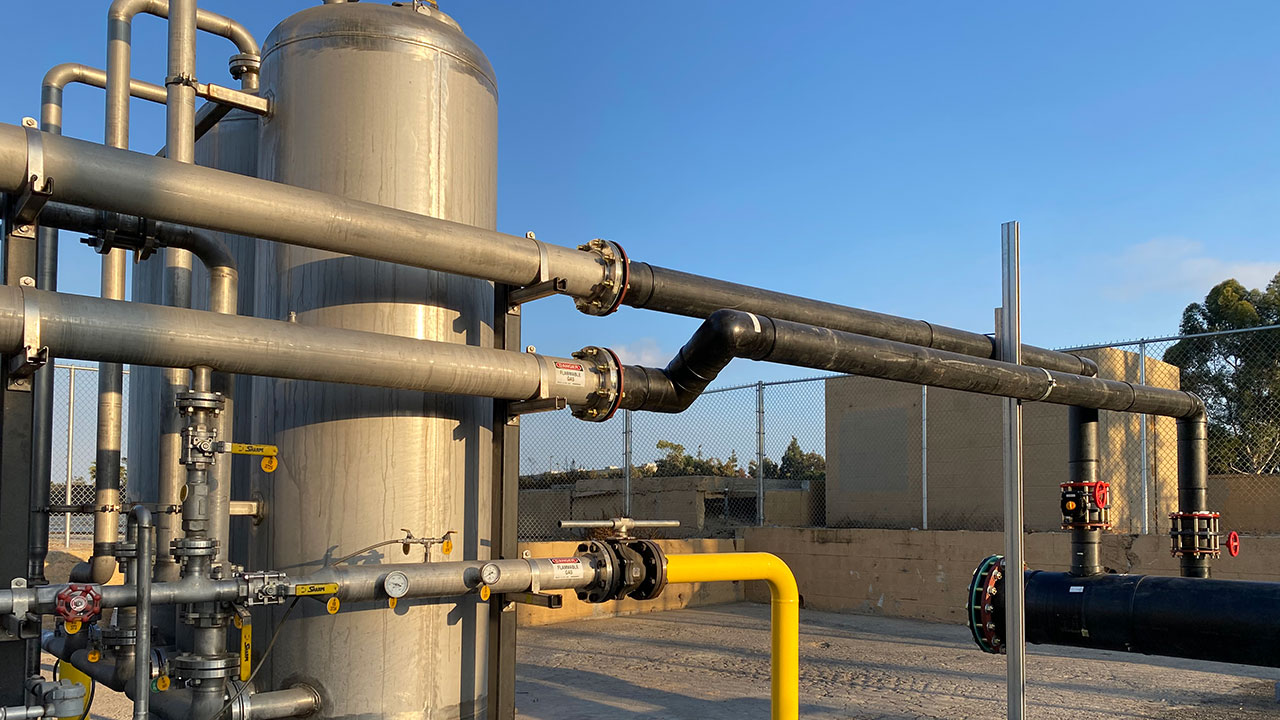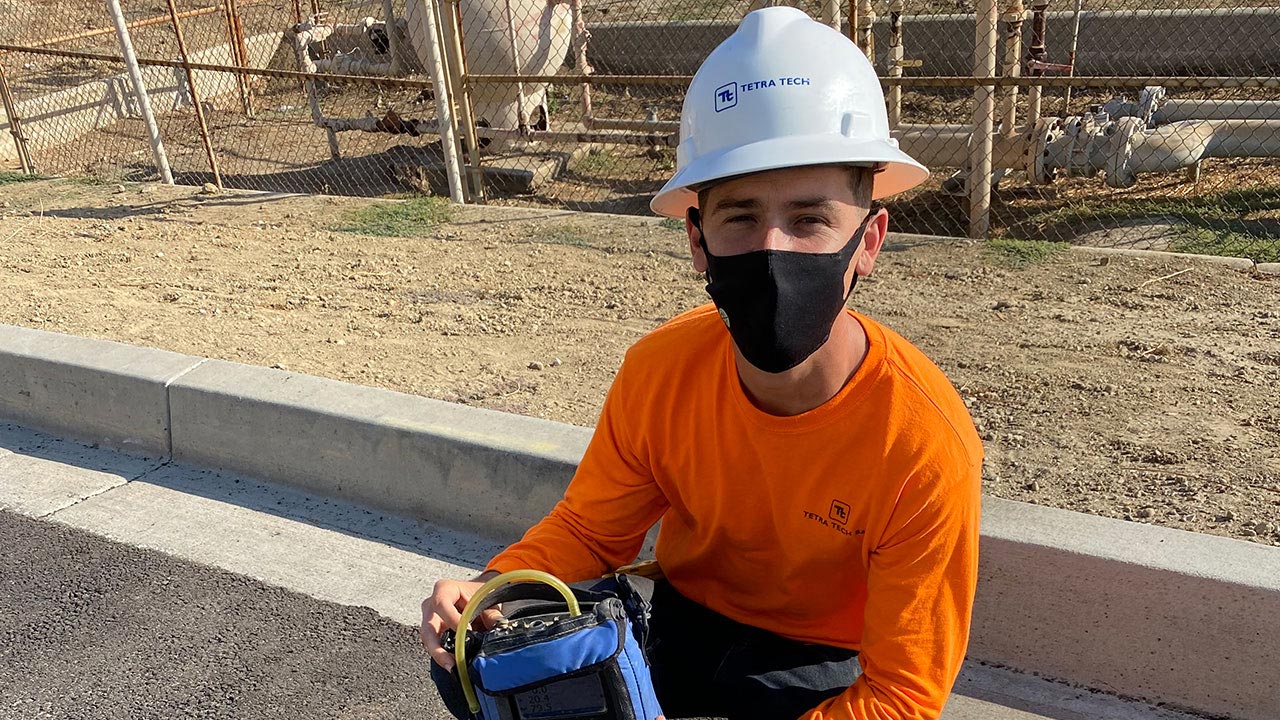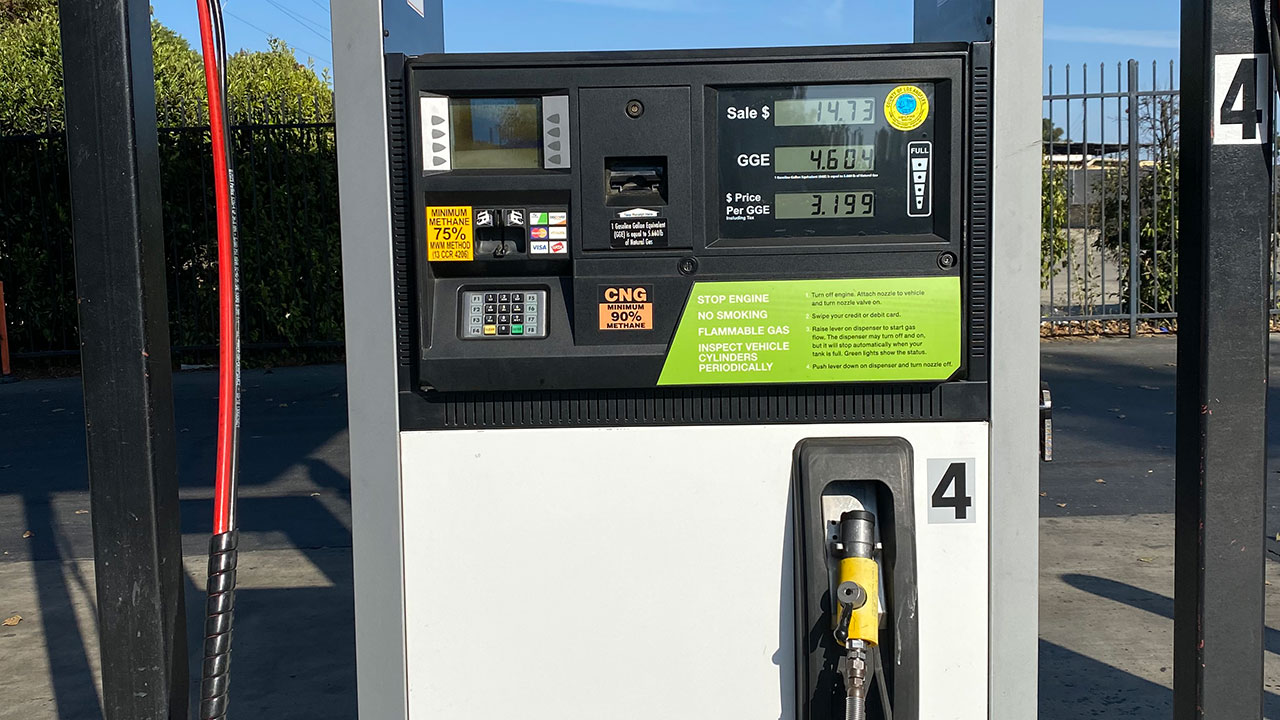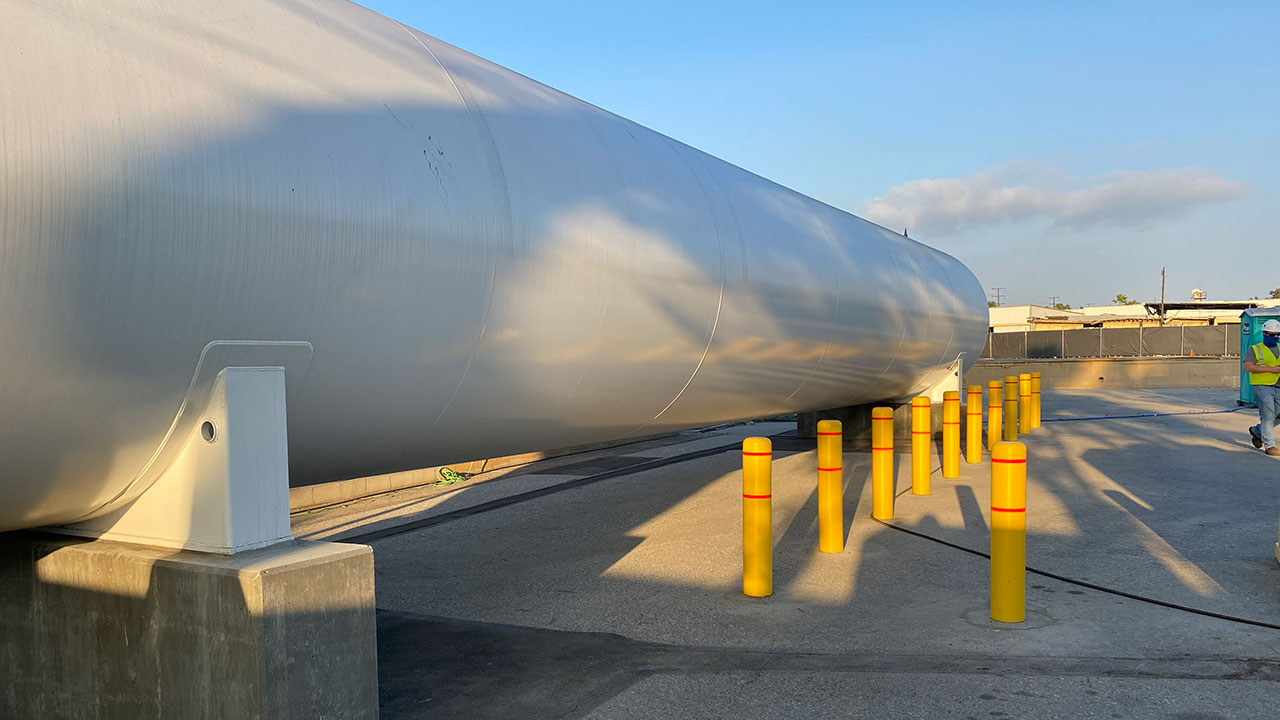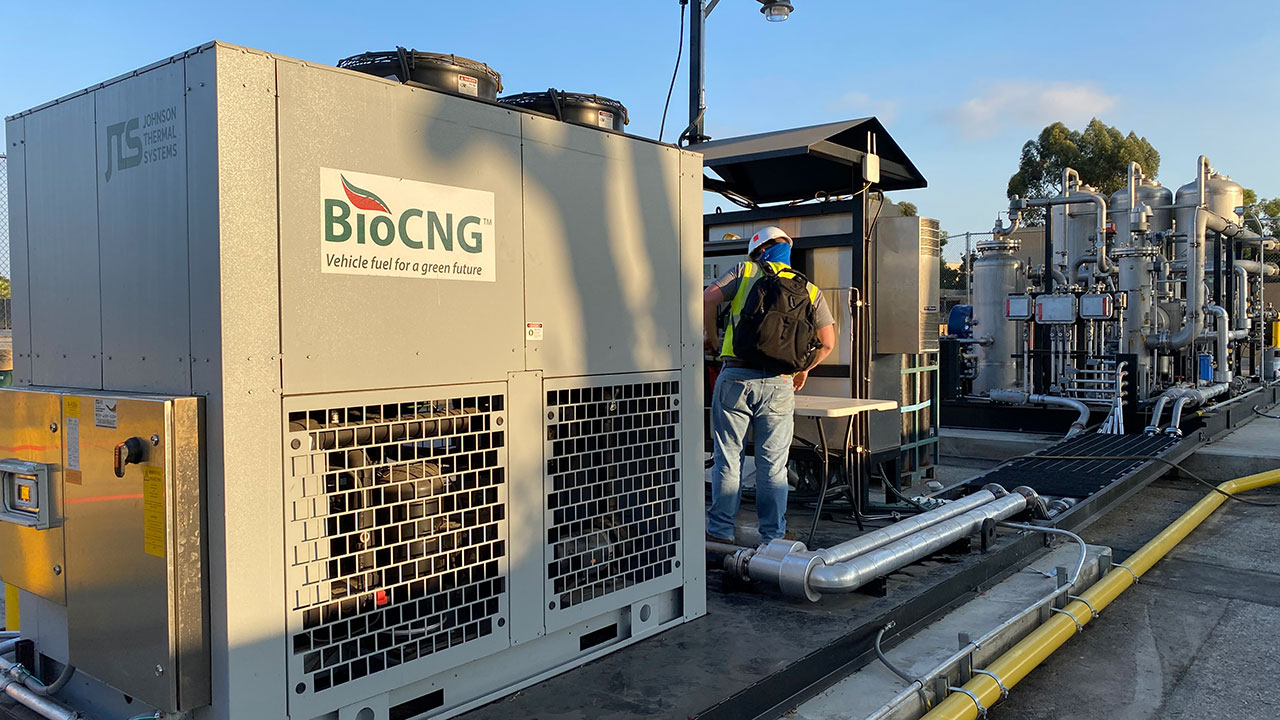
In this blog he discusses using this project as a model for future conversions of high-quality digester biogas—produced by municipal sewage combined with commercial food waste—to vehicle fuel.
LACSD produces electricity for wastewater treatment plant (WWTP) operations from digester biogas at its Joint Water Pollution Control Plant (JWPCP) in Carson, California. The digester biogas has a methane content of more than 65 percent, with no air and little hydrogen sulfide to remove or clean.
LACSD wanted to route some of this high-quality biogas to a new biogas conditioning system for use as renewable natural gas (RNG). This converted fuel would be used by the hundreds of trucks that pass by the WWTP carrying shipping containers from the Port of Long Beach. Some years ago, California mandated that semitrucks transition from diesel fuel to compressed natural gas (CNG) to reduce air pollution at the busy port.
Managing design-build projects like this one for LACSD are so much fun because we are involved throughout the full project life cycle. It is quite a contrast to traditional engineering, and it makes me and our entire team better engineers, contractors, and operators because we all learn from each other.
As the saying goes, location, location, location—and Carson is conveniently located as semitrucks exit the port. The existing CNG station runs on natural gas from a utility pipeline, and LACSD wanted to take advantage of JWPCP’s location near the Port entrance to replace the CNG fuel with its own RNG.
Producing more than 2,000 gasoline gallons equivalent of fuel per day
LACSD called on Tetra Tech to design and install a system to produce the RNG fuel, with Tetra Tech-patented equipment from our partner Unison Solutions of Dubuque, Iowa. The $3 million system includes a patented BioCNG™ conditioning system capable of processing up to 400 standard cubic feet per minute of biogas from the JWPCP anaerobic digesters. The system’s actual production is more than our contractual requirement (up to 2,800 gasoline gallons equivalent per day) of RNG with more than 98 percent methane concentration. A 30,000-gallon RNG storage tank accommodates peak hours of fuel consumption, allowing the existing fueling station to use RNG almost exclusively. LACSD estimates that up to 40 trucks per day will be getting their fuel from this RNG station.
Design challenge: Don’t blow the covers off the digesters
Tetra Tech supplied all ancillary valves, meters, gauges, and controls to allow the BioCNG gas conditioning system to function with the existing CNG fueling station and to send wireless signals to the JWPCP controls. Far from being a routine part of the project, these elements proved to be an exciting conundrum for this seasoned design engineer. The plant’s digesters have covers so gas does not escape to the atmosphere, but the covers are not bolted down. Instead, they float on a water seal, so there was the potential that too much gas pressure from the conditioning system’s waste gas could cause the covers to lift off their seals.
LACSD wanted Tetra Tech to make sure that never happened. They also did not want to rely on mechanical relief valves, which have the potential to malfunction. Thus, my challenging design constraint—never exceed the allowable back pressure. Why was this an issue? The biogas conditioning system was permitted to have zero emissions. This means that a waste gas flare was not allowed, so waste gas had to be returned near the digesters so it would end up at the electrical generators after blending with existing biogas. We had to be very careful because the RNG was compressed to 150 pounds per square inch (PSI), but the water seals meant we could only return waste gas to the digesters at pressures under three-quarters of a PSI! This is a huge difference, and I’ll admit I lost sleep over providing a design that would not lift those digester covers off their water seals.
In the end, we used a much larger waste gas pipe to return the waste gas to the digesters instead of the standard physical pressure-reducing valve. The simple system of dissipating pressure via expansion of gas in a large pipe worked like a charm. I was on hand when we flipped the switch. It wasn’t until after standing in front of the digesters, watching pressure gauges in real-time for two hours with plant operators, that we all finally agreed that our design had paid the proper attention to detail.
Our initial contract with LACSD was to design the system, supply all equipment, install and connect everything, and commission it. LACSD was so happy with our work that they decided to give us an add-on to operate the system for the first year. Two members of our Diamond Bar, California, office are on hand part-time to keep the biogas conditioning system operating in perfect order.
BioCycle highlighted the benefits and expansion of LACSD’s biogas purification system.
About the author
Mike Michels
Mike Michels is a solid waste engineer with more than 40 years of experience siting and designing landfills and implementing biogas-to-energy beneficial use projects.
Mike currently serves as Tetra Tech’s Senior Client Manager, working on some of the company’s largest and most complex environmental and energy projects.
Mike was previously Director of the Landfill Gas Management Technical Division for the Solid Waste Association of North America, receiving the association’s Distinguished Individual Achievement Award in 2000. He has served on several states’ solid waste task forces at the request of their governors. Mike also serves on the Environmental Research and Education Foundation (EREF) research council, helping to funnel EREF’s grants to the worthiest technical research initiatives. He has authored or coauthored more than 50 technical papers and presentations.
